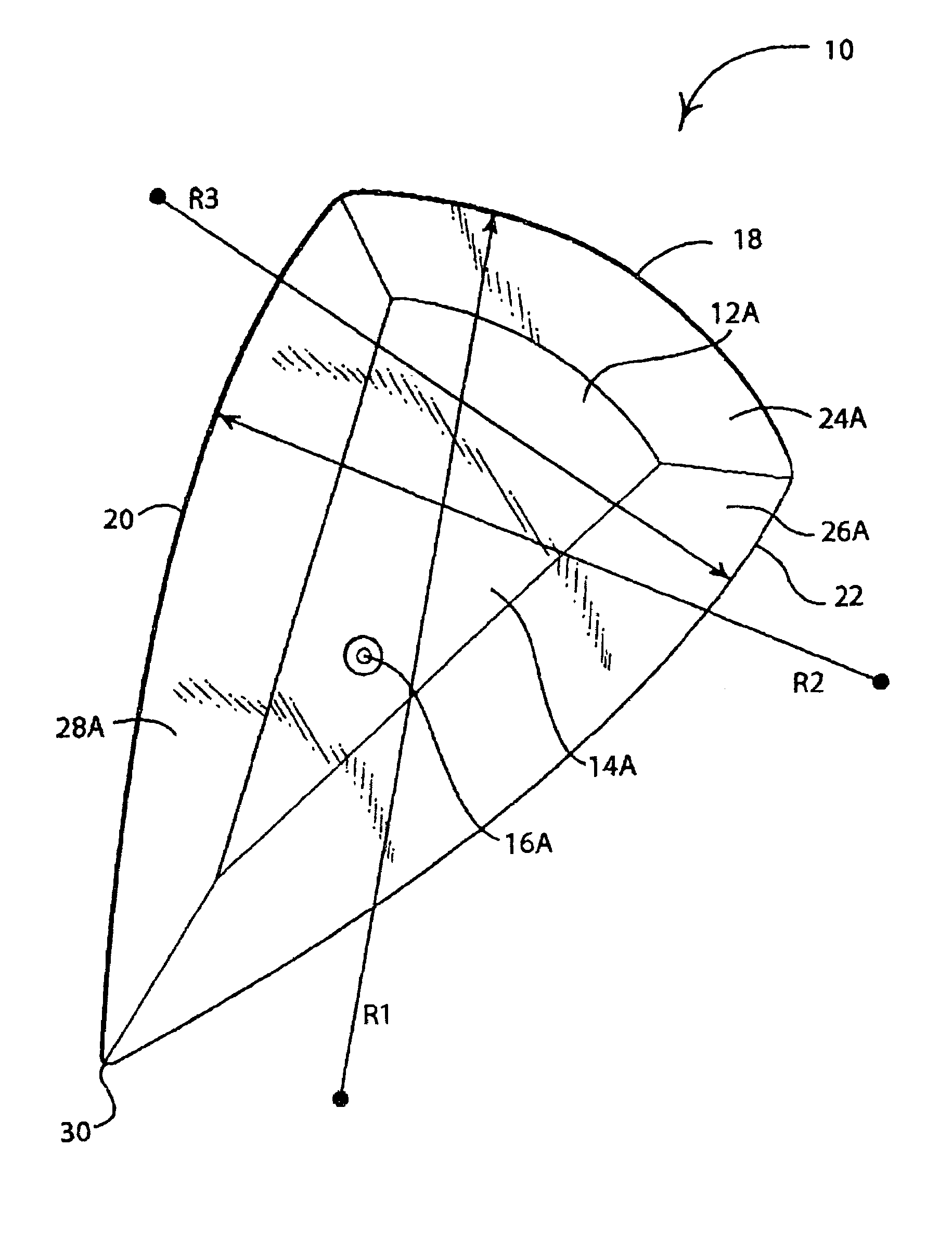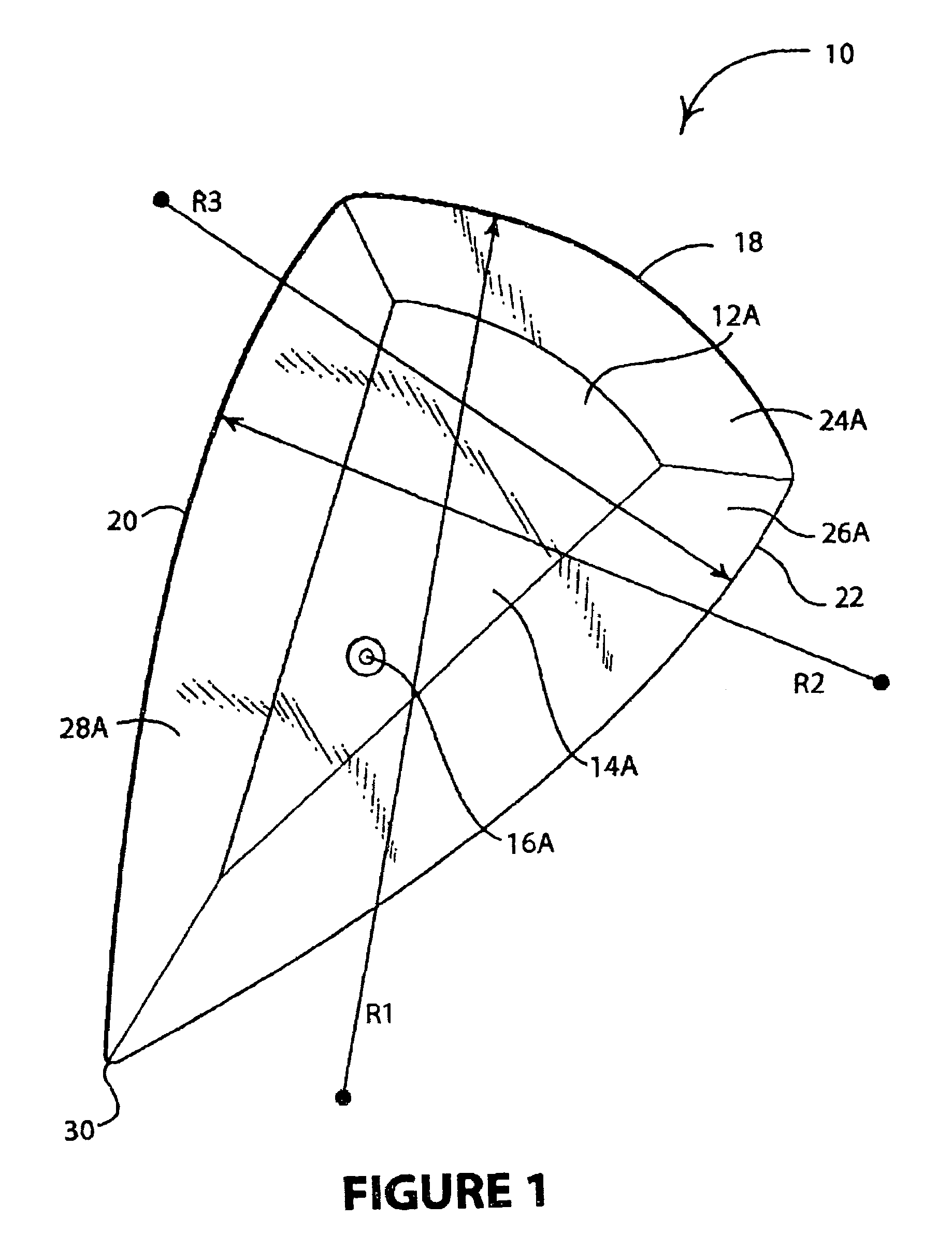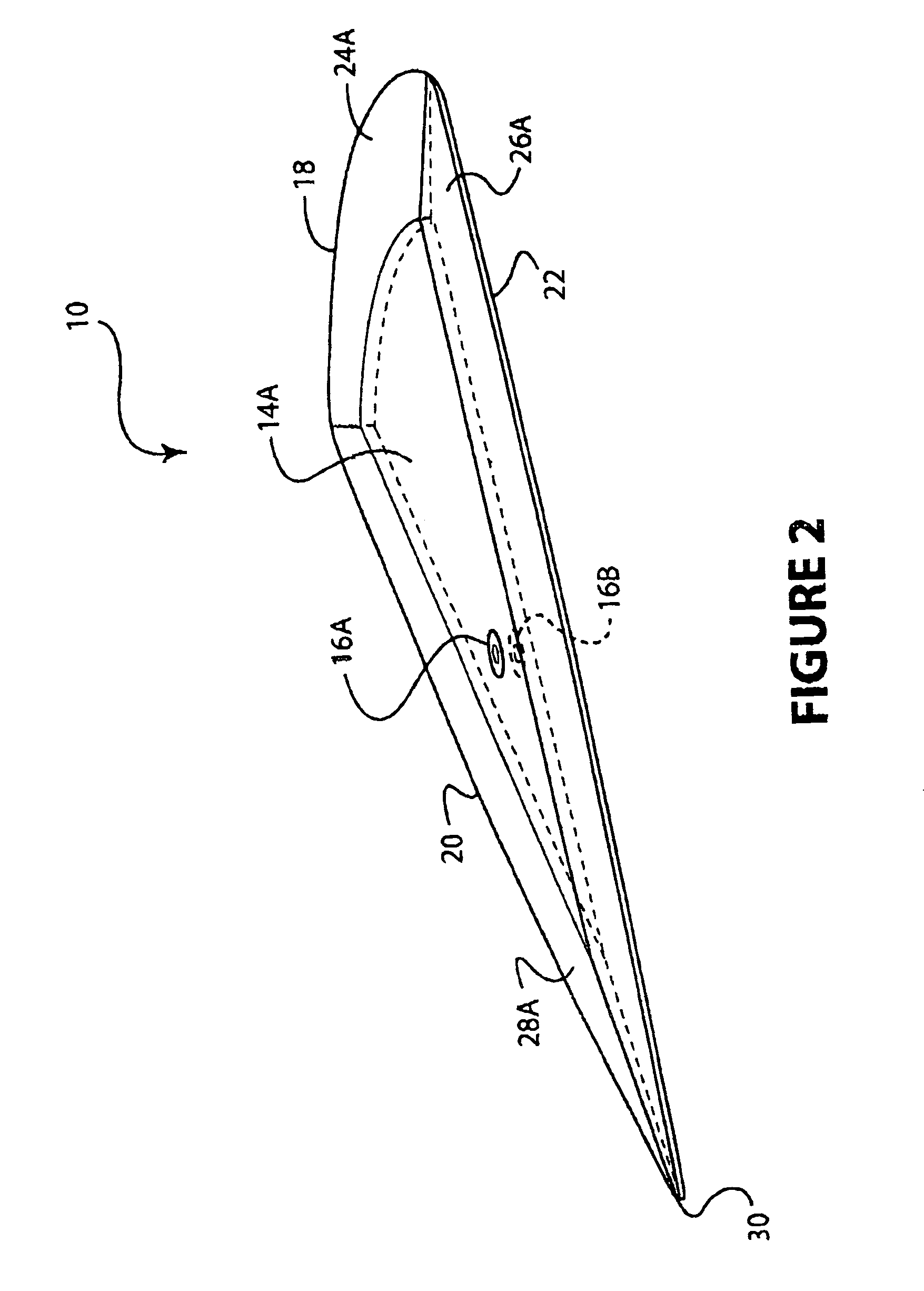Film applicator tool with arcuate edges
a film applicator and edge technology, applied in the field of tools, can solve the problems of forming bubbles or folds in the film, difficult application of any of these films, laborious process, etc., and achieve the effect of preventing tearing or abrading the film during application, ensuring the effect of adhesion and flexibility
- Summary
- Abstract
- Description
- Claims
- Application Information
AI Technical Summary
Benefits of technology
Problems solved by technology
Method used
Image
Examples
Embodiment Construction
[0031]Firstly, although the embodiment described above is bilaterally symmetric, it may be described as having upper and lower surfaces or first and second surfaces, even though these surfaces may be essentially identical. Where used, the expression “and / or” is used in the sense of A, B or A+B. The term “arcuate” is used to mean an edge or contour having a uniform radius of convex curvature.
[0032]Turning now to the drawings, FIG. 1 shows a generally triangular applicator tool 10 having a first side 12A and a second side (not visible here) 12B. Each side has a raised or thicker central portion 14A (and 14B, not visible here). Mold marks 16A and 16B are left on the tool by the preferred dual cavity molding process, which easily produces a tool having bilateral symmetry. Arcuate edges 18, 20 and 22 have at least two different radii of curvature R1, R2 and R3, respectively, as indicated in FIG. 1. Depending upon the type of application, these radii can range from about to about inches. ...
PUM
| Property | Measurement | Unit |
|---|---|---|
| width | aaaaa | aaaaa |
| radius | aaaaa | aaaaa |
| acute angle | aaaaa | aaaaa |
Abstract
Description
Claims
Application Information
 Login to View More
Login to View More - R&D
- Intellectual Property
- Life Sciences
- Materials
- Tech Scout
- Unparalleled Data Quality
- Higher Quality Content
- 60% Fewer Hallucinations
Browse by: Latest US Patents, China's latest patents, Technical Efficacy Thesaurus, Application Domain, Technology Topic, Popular Technical Reports.
© 2025 PatSnap. All rights reserved.Legal|Privacy policy|Modern Slavery Act Transparency Statement|Sitemap|About US| Contact US: help@patsnap.com



